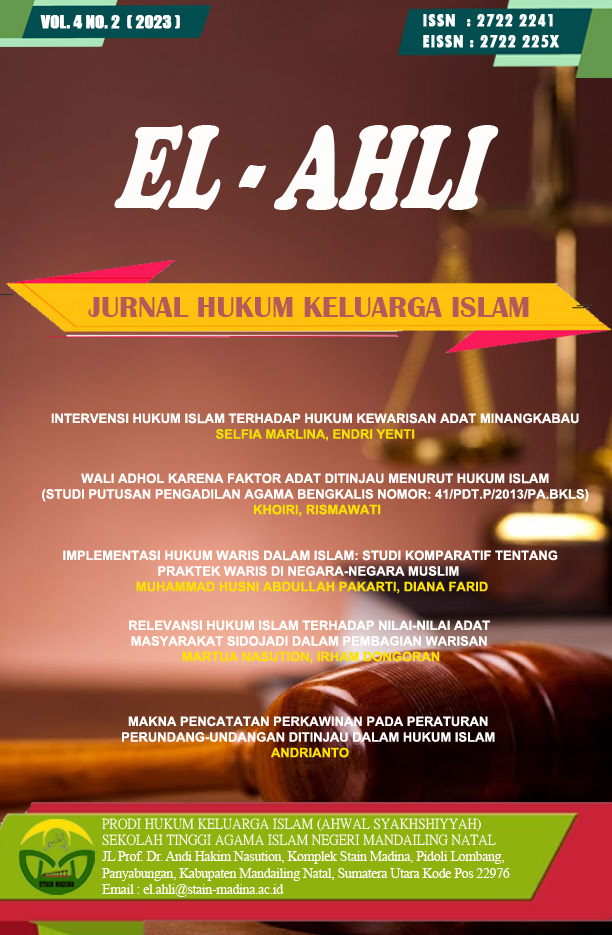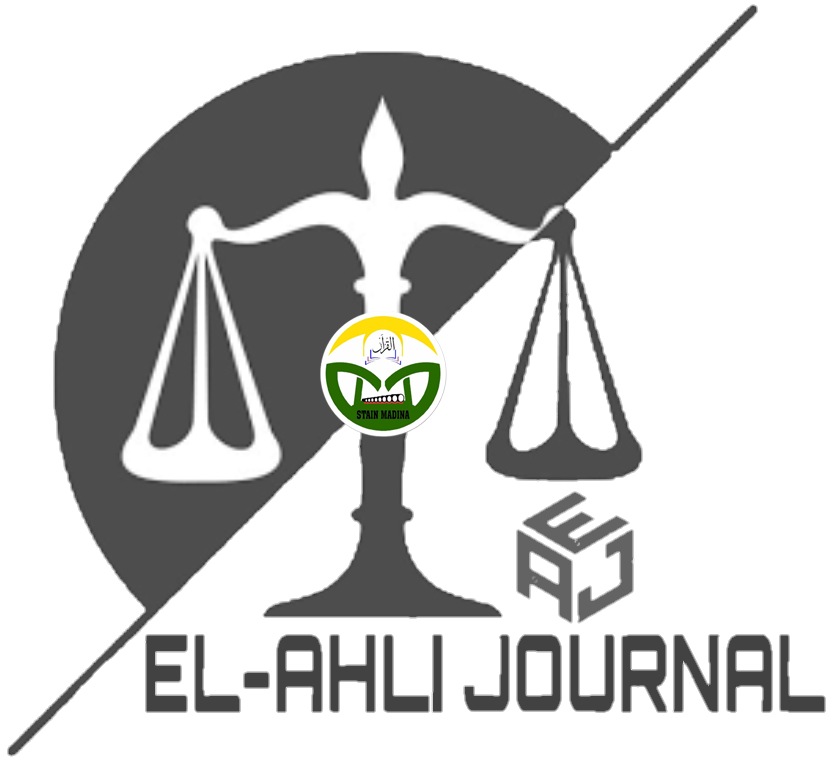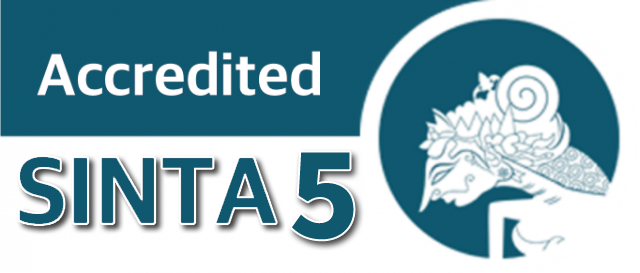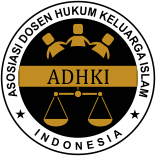INTERVENSI HUKUM ISLAM TERHADAP HUKUM KEWARISAN ADAT MINANGKABAU
DOI:
https://doi.org/10.56874/el-ahli.v4i2.1269Keywords:
Islamic Law, Minagkabau InheritanceAbstract
Abstract
Minangkabau has two forms of inheritance, namely high inheritance and low inheritance and the kinship system in Minangkabau adheres to the matrilineal principle. Because in Minangkabau custom there are two forms of inheritance distribution, namely individual and collective, so there are differences in inheritance distribution in adat and Islamic law. The Compilation of Islamic Law which is a collection of rules used as a reference for Muslims in Indonesia also regulates inheritance. This study aims to see whether Islamic law intervenes in customary law, especially in the Compilation of Islamic Law regarding inheritance. This study uses a literature review (library research) with a descriptive method through a qualitative approach with the main data coming from journals, books, and the internet. Data collection is done by reading, taking notes and comparing according to the themes discussed. The results of this study indicate that there is an intervention Islamic law regarding the inheritance system that exists in Minangkabau custom in several articles in the Compilation of Islamic Law, for low inheritance in its distribution in customary law and KHI both use faraidh law, while high inheritance according to KHI is not included in inheritance because ownership cannot be individually owned.
Keyword: Islamic Law, Minagkabau Inheritance
References
Ali, Zainuddin. 2022. Hukum Islam Pengantar Ilmu Hukum Islam di Indonesia. Jakarta: Sinar Grafika.
Azizy, A. Qadri. 2001. Hukum Nasional, Kompetisi antara Hukum Islam dan Hukum Umum. Yogyakarta: Gama Media.
Daud Ali, H. Muhammad. 2006. Hukum Islam Pengantar Ilmu Hukum dan Tata Hukum Islam di Indonesia. Jakarta: PT. Raja Grafindo Persada.
DT. Rajo Panghulu, Idrus Hakimy. 1994. Pokok-pokok Pengetahuan Adat Alam Minagkabau. Bandung: Remaja Rosdakarya.
Gunaryo, Achmad. 2006. Pergumulan Politik dan Hukum Islam. Semarang: Pustaka Pelajar.
Hamka. 1984. Islam dan Adat Minagkabau. Jakarta: Pustaka Panjimas.
Hasan Basri, Cik. 1998. Peradilan di Indonesia. Jakarta: Raja Grafindo Perkasa.
“https://www.academia.edu/31916071/Intervensi_Individu_Kelompok_dan_Komunitas.”
Mahyuddin, Suardi. 2009. Dinamika Sistem Hukum Adat Minangkabau Dalam Yurispudensi mahkamah Agung. Jakarta: PT Candi Cipta Paramuda.
Manggis, M. Rasjid. 1971. Minangkabau : Sejarah Ringkas dan Adatnya. Padang: Sridharma.
Rahmad, Beni, Endri Yenti, dan Hanif Aidhil Alwana. “The Existence Of High Heirloom Assets In Nagari Muaro Paiti And Their Relevance To Comtemporary Islamic In Heritance.” Al Hurriyah 7 No. 2 (Juli 2022). https://doi.org/10.30983/alhurriyah.v7i2.
Rahman, Fatchur. 1971. Ilmu Waris. Bandung: Al-Ma’arif.
Wignjosubroto, Soetandyo. 1995. Dari Hukum Kolonial ke Hukum Nasional, Dinamika Sosial Politik dan Perkembangan Hukum di Indonesia. Jakarta: Rafa Grafindo Persada.
Yasirman. 2013. Hukum Keluarga : Karakteristik dan Prospek Doktrin Islam dan Adat dalam Masyarakat Matrelinela Minagkabau. Jakarta: Rajawali Press.
Downloads
Published
How to Cite
Issue
Section
License
All articles published in EL-AHLI: Jurnal Hukum Keluarga Islam are licensed under a Creative Commons Attribution-ShareAlike 4.0 International License (CC BY-SA 4.0).
Under this license, authors and readers are free to:
-
Share — copy and redistribute the material in any medium or format.
-
Adapt — remix, transform, and build upon the material for any purpose, even commercially.
Under the following terms:
-
Attribution — You must give appropriate credit, provide a link to the license, and indicate if changes were made. You may do so in any reasonable manner but not in any way that suggests the licensor endorses you or your use.
-
ShareAlike — If you remix, transform, or build upon the material, you must distribute your contributions under the same license as the original.
Copyright and Licensing Policy:
-
The author retains copyright and grants the journal the right of first publication with the work simultaneously licensed under the Creative Commons Attribution-ShareAlike 4.0 International License, which allows others to share the work with acknowledgment of the work’s authorship and initial publication in this journal.
-
Authors are allowed to enter into separate, additional contractual arrangements for the non-exclusive distribution of the journal's published version of the work (e.g., post it to an institutional repository or publish it in a book), with an acknowledgment of its initial publication in this journal.
Link to License:
https://creativecommons.org/licenses/by-sa/4.0/





